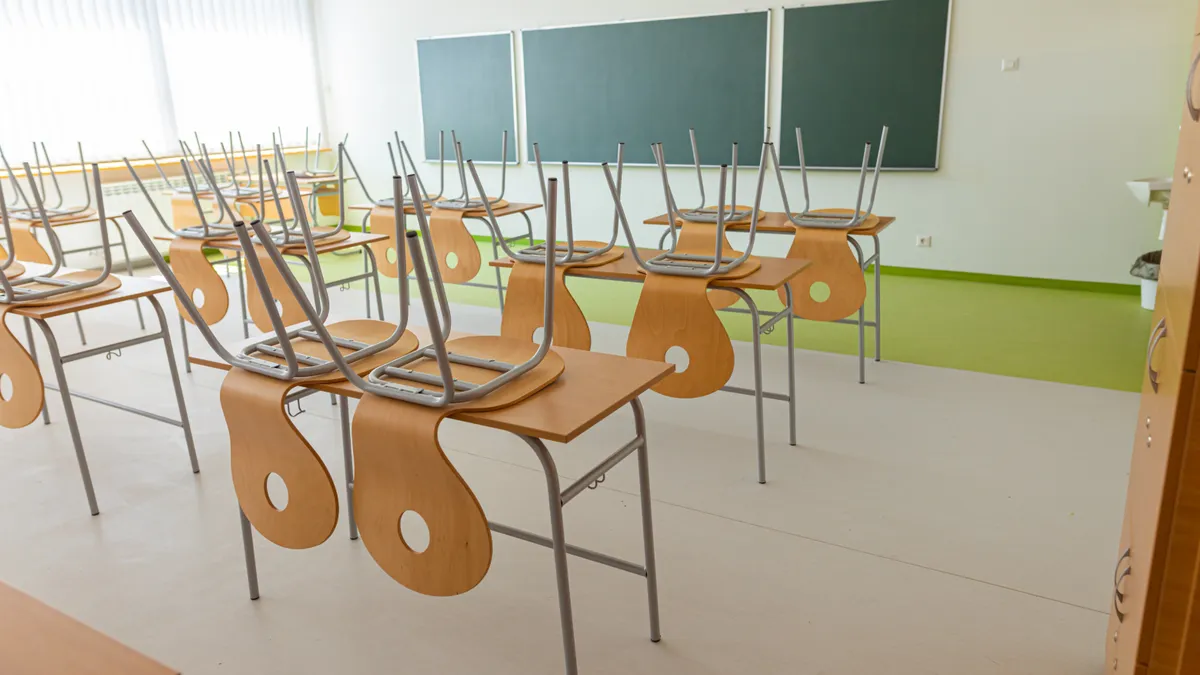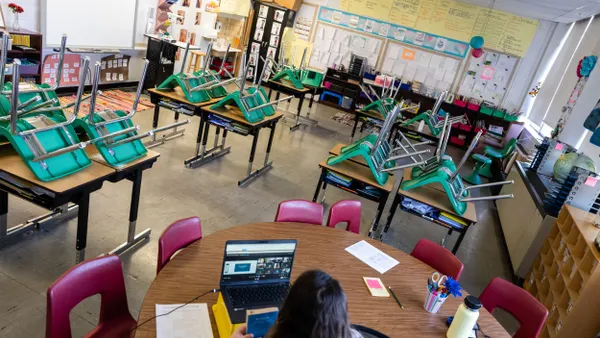Dive Brief:
-
A coalition of education nonprofit organizations is calling on states and school districts to put policies in place to decrease student chronic absenteeism by 50% over the next five years, according to an announcement made Wednesday by American Enterprise Institute, Education Trust and Attendance Works.
-
At a gathering in Washington, D.C., organization leaders and educators called the goal ambitious, but said high post-pandemic absenteeism rates are negatively impacting student learning, teacher retention, school culture and postsecondary preparedness.
-
Best practices — such as strengthening home-school relationships, monitoring attendance data and using engaging instruction — will be critical as schools work to boost academic outcomes while also adjusting to the end of federal COVID-19 emergency funds, speakers said.
Dive Insight:
Nationally, chronic absenteeism — defined as the percentage of students missing at least 10% of the school year, or about 18 days — ballooned from 15% in 2018 to 28% in 2022, according to the Return 2 Learn Tracker from AEI.
Nat Malkus, deputy director of education policy studies at AEI, added that chronic absenteeism increased across racial groups, districts sizes and other measurements.
"This is a nationwide rising of a tide that's going to harm students," Malkus said. "It's the most urgent issue facing schools today."
Hedy Chang, executive director of Attendance Works, said the 50% goal is "really a call for collective action" from governors, state and local leaders, school officials, health care providers and others.
"As COVID dollars recede, folks are going to have to be even more clear, targeted and creative about how they're going to ensure they have the resources to continue making a difference," Chang said.
Denise Forte, president and CEO of Ed Trust, said there are proven practices and examples of how schools and districts have increased attendance. This can't be a "one-size-fits-all" approach, but there is "evidence of what works, and understanding both what students need and how to prioritize those needs is going to be really important."






 Dive Awards
Dive Awards







